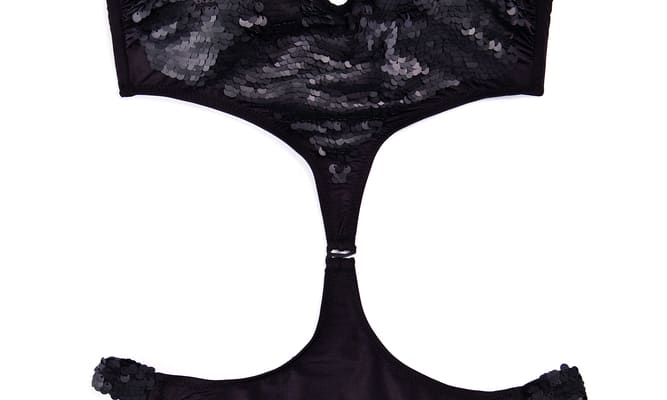Trends for women's underwear 2025: Important styles and innovations
The world of women's underwear is constantly evolving, with new styles, materials, and innovations emerging to meet changing consumer preferences and needs. As we look towards 2025, several key trends are shaping the future of intimate apparel. From sustainable fabrics to tech-integrated designs, the underwear industry is embracing change and pushing boundaries. This article explores the upcoming trends and innovations in women's underwear, offering insights into what consumers can expect in the coming years.

What price segments and offers are available in the 2025 underwear market?
The women’s underwear market in 2025 is expected to cater to a wide range of price segments, reflecting diverse consumer needs and preferences. At the lower end, budget-friendly options will continue to be available from mass-market retailers and online marketplaces. These offerings typically focus on basic styles and materials, providing affordable everyday essentials.
In the mid-range segment, consumers can expect to find a balance between quality and affordability. This category often includes well-known high-street brands and specialty lingerie retailers, offering a mix of practical and fashionable options with improved materials and construction.
The premium and luxury segments are likely to see continued growth, with a focus on high-quality materials, innovative designs, and exclusive collaborations. These products often feature advanced technologies, sustainable practices, and personalized fit options, justifying their higher price points.
Which popular brands are leading innovations in women’s underwear?
Several established and emerging brands are at the forefront of innovation in the women’s underwear industry. Traditional lingerie powerhouses are adapting to changing consumer demands, while new players are entering the market with fresh perspectives and technologies.
One area of focus is sustainability, with brands like Organic Basics and Boody leading the charge in eco-friendly underwear options. These companies are utilizing organic and recycled materials, as well as implementing ethical manufacturing processes.
Tech-integrated underwear is another growing trend, with brands like Myant and Skiin developing smart fabrics that can monitor health metrics or adapt to body temperature. These innovations blur the line between intimate apparel and wearable technology.
Inclusivity is also driving innovation, with brands like ThirdLove and Savage X Fenty expanding size ranges and offering more diverse fit options. These companies are leveraging data and customer feedback to create underwear that caters to a wider range of body types and preferences.
What innovative material developments are shaping the future of women’s underwear?
The future of women’s underwear is closely tied to advancements in material science. Innovative fabrics and manufacturing techniques are set to revolutionize comfort, functionality, and sustainability in intimate apparel.
Biodegradable materials are gaining traction, with brands exploring options like Tencel lyocell and bamboo fibers. These materials offer superior softness and breathability while reducing environmental impact.
Smart fabrics are another area of development, with materials that can regulate temperature, wick moisture, or even emit soothing scents. Some advanced textiles are being designed to offer antimicrobial properties or UV protection, adding functional benefits to everyday underwear.
3D-knitting technology is also making waves in the industry, allowing for seamless construction and personalized fit. This technique reduces waste in the manufacturing process and can create more comfortable, tailored garments.
What are the popular trends in women’s underwear for 2025?
As we approach 2025, several key trends are emerging in women’s underwear design and functionality. Comfort continues to be a top priority, with an increasing focus on soft, breathable materials and seamless construction. High-waisted styles and fuller coverage options are gaining popularity, offering both comfort and a sleek silhouette under clothing.
Sustainability is no longer just a niche concern but a mainstream expectation. Consumers are increasingly seeking underwear made from eco-friendly materials and produced through ethical manufacturing processes. Brands are responding with recycled fabrics, organic cotton options, and transparent supply chains.
Adaptability is another growing trend, with multipurpose underwear designs that can transition from everyday wear to activewear or even swimwear. This versatility appeals to consumers looking for practicality and value in their purchases.
Personalization is set to become more prevalent, with brands offering custom-fit options based on individual measurements and preferences. This trend is supported by advancements in 3D body scanning technology and made-to-order manufacturing processes.
Lastly, the line between underwear and outerwear continues to blur, with lingerie-inspired pieces becoming more acceptable as visible elements of fashion. This trend is driving innovations in stylish yet comfortable designs that can be confidently showcased.
| Price Segment | Typical Offerings | Estimated Price Range |
|---|---|---|
| Budget | Basic styles, everyday essentials | £5 - £20 per item |
| Mid-range | Mix of practical and fashionable options | £20 - £50 per item |
| Premium | High-quality materials, innovative designs | £50 - £100+ per item |
| Luxury | Exclusive collections, personalized fit | £100 - £500+ per item |
Prices, rates, or cost estimates mentioned in this article are based on the latest available information but may change over time. Independent research is advised before making financial decisions.
As we look towards 2025, the women’s underwear industry is poised for significant transformation. From innovative materials and sustainable practices to personalized fit and tech integration, the future of intimate apparel is focused on meeting the diverse needs of consumers. These trends reflect a broader shift towards comfort, functionality, and conscious consumption in the fashion industry. As technology and consumer preferences continue to evolve, we can expect to see even more exciting developments in the world of women’s underwear.




